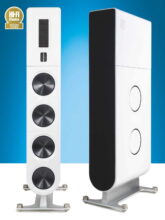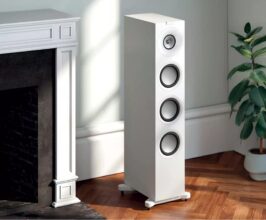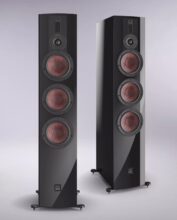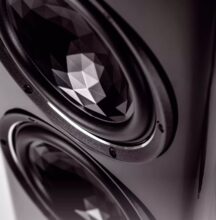DALI Kore Review
The Danish speaker giant DALI had promised a state-of-the-art speaker at the press event in Munich’s MOC. In rare unanimity, the guests left the demo room after the presentation of the DALI Kore with broad grins on their faces.
by Michael Lang
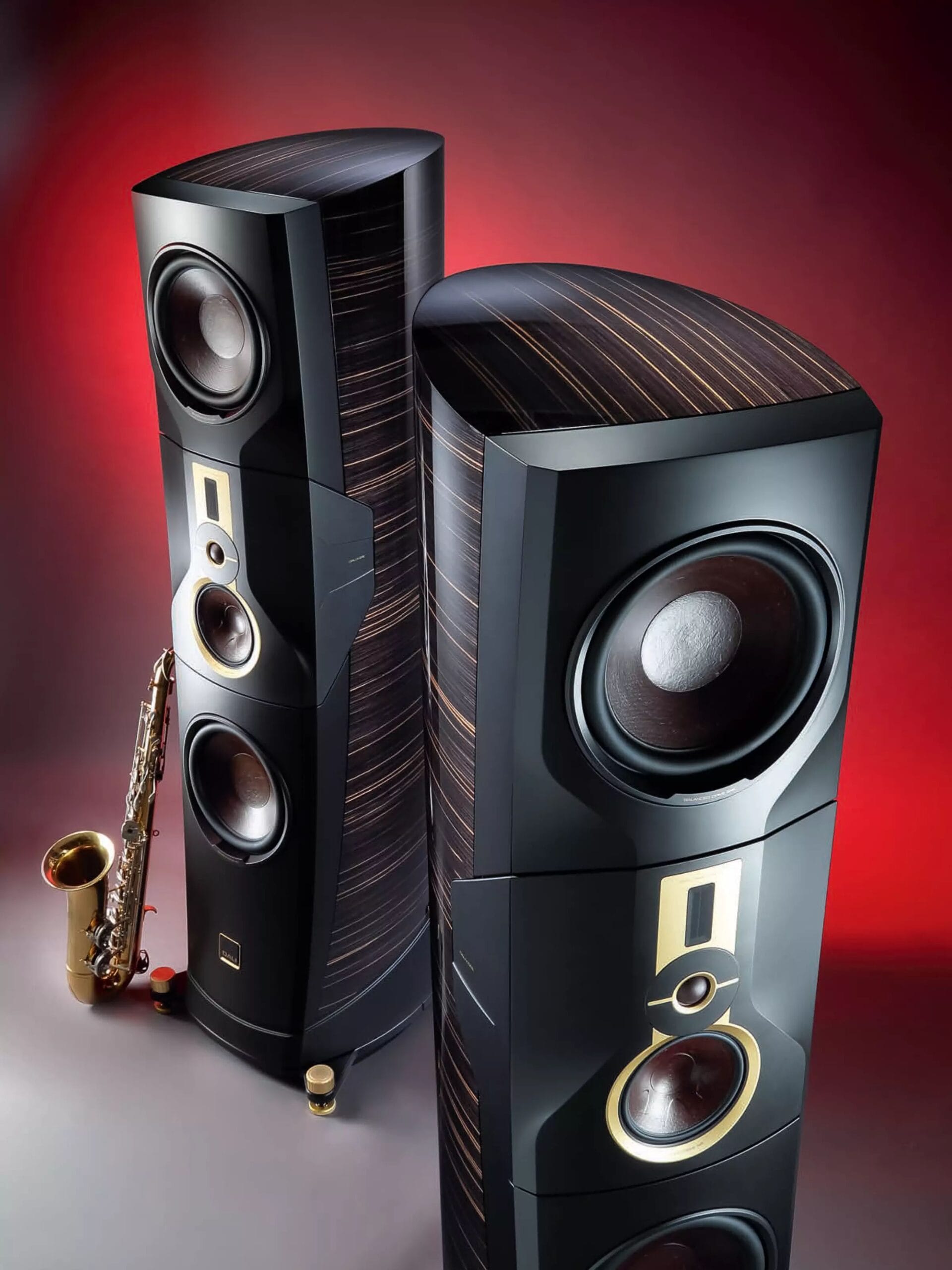
ARCHITECTURE The difference to a “normal” chassis is about as big as between a snack bar and a gourmet temple.
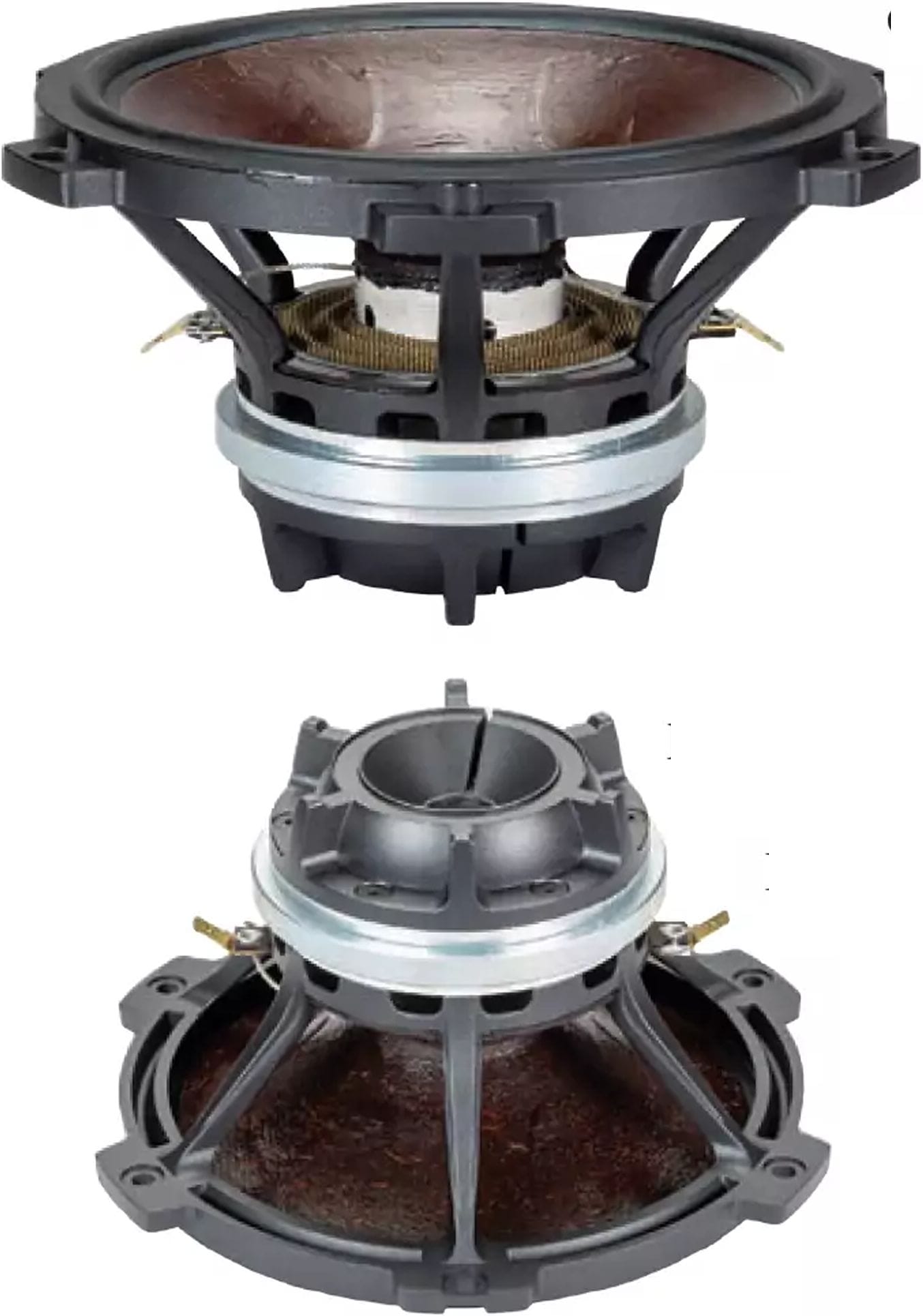
High End, May 2022, Munich – for the attending press people, that means four hectic days, a race against time to discover as many exciting novelties as possible, to have them explained, and at least to get one or other short listening session from a decent seat.
Despite these circumstances, the DALI demonstration room was packed with press people as their CEO Lars Worre and his team explained the background and ambitions of the Kore. Which was certainly necessary because it was not necessarily expected that DALI, known for down-to-earth pricing of their speakers, would present a colossus weighing around 140 kilograms, with a total height of 170 centimeters and a pair price of $84,000. Because there is truly no shortage of high-priced speakers from small manufacturers.
And finally, it’s been a good 25 years since the introduction of the Megaline, with which the Danish loudspeaker manufacturer first amazed high-end enthusiasts worldwide in 1996. The price of the Megaline was just under $46,200 per pair when production was finally discontinued in 2012.
But between its predecessor and the Kore, there’s not only a large price and time span; even technologically, it’s apparent after brief perusal of the white paper that 25 years is plenty of time to turn thoughts about sound improvements into concrete measures and ultimately a marketable product. Because contrary to other rumors, there have been numerous, sometimes significant advances in the reproduction of music via corresponding devices and speakers.
The Self-Imposed Ambition
The self-imposed ambition to achieve this goal was studded with numerous stumbling blocks, which led to the development time taking significantly longer than originally calculated. For not only did the cabinet, with its curved shape consisting of many layers of birch wood, require extraordinary ideas, but also the combination with the concrete base and the mid/high-frequency unit integrated into a massive aluminum block was a challenge, which was solved among other things with a five-axis computer-controlled milling machine and a painting system that applies and dries the very hard yet environmentally friendly lacquer quickly and precisely.
Even the crossover only found favor with the developers once some components were specially designed for this speaker. Producing as much as possible in-house and also sourcing from suppliers in the regional surroundings of the company’s headquarters in Nørager was another task. The picture of the cut-open box illustrates the complexity of the Kore.
Conservative & Conventional?
Before we get to the chassis that, although installed, look rather conservative and conventional, a brief note on the assembly challenges caused by the weight of the speaker and individual components: It was necessary to devise aids from pulleys to turntables to assemble what belongs together. And all that without a single visible screw! The fact that the speaker comes as a whole and not as a multi-part “kit” also required some ideas for the packaging. So they designed a ramp and added wheels to the boxes to move them to their final position.
WE LISTENED WITH
Bizet: Carmen
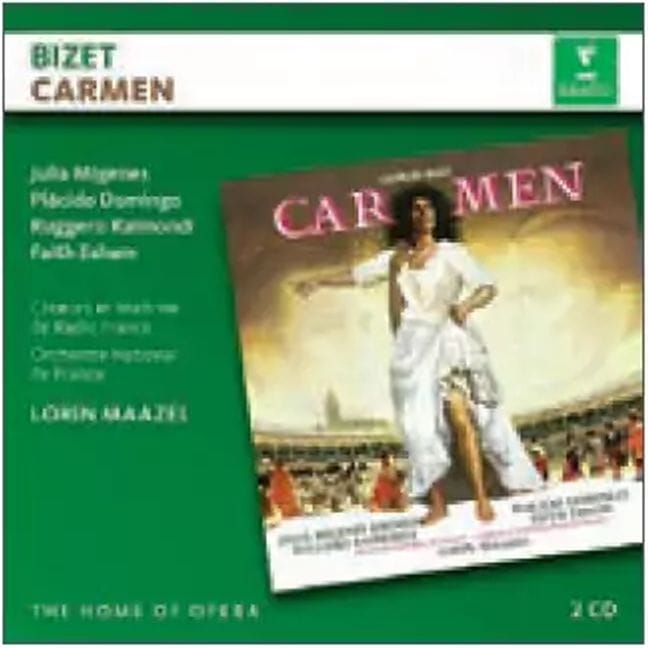
Among the countless recordings, this one with Julia Migenes and Placido Domingo stands out vocally.
Bläck Fööss – 50

Famous songs from the original mother of all Cologne bands in exciting new arrangements.
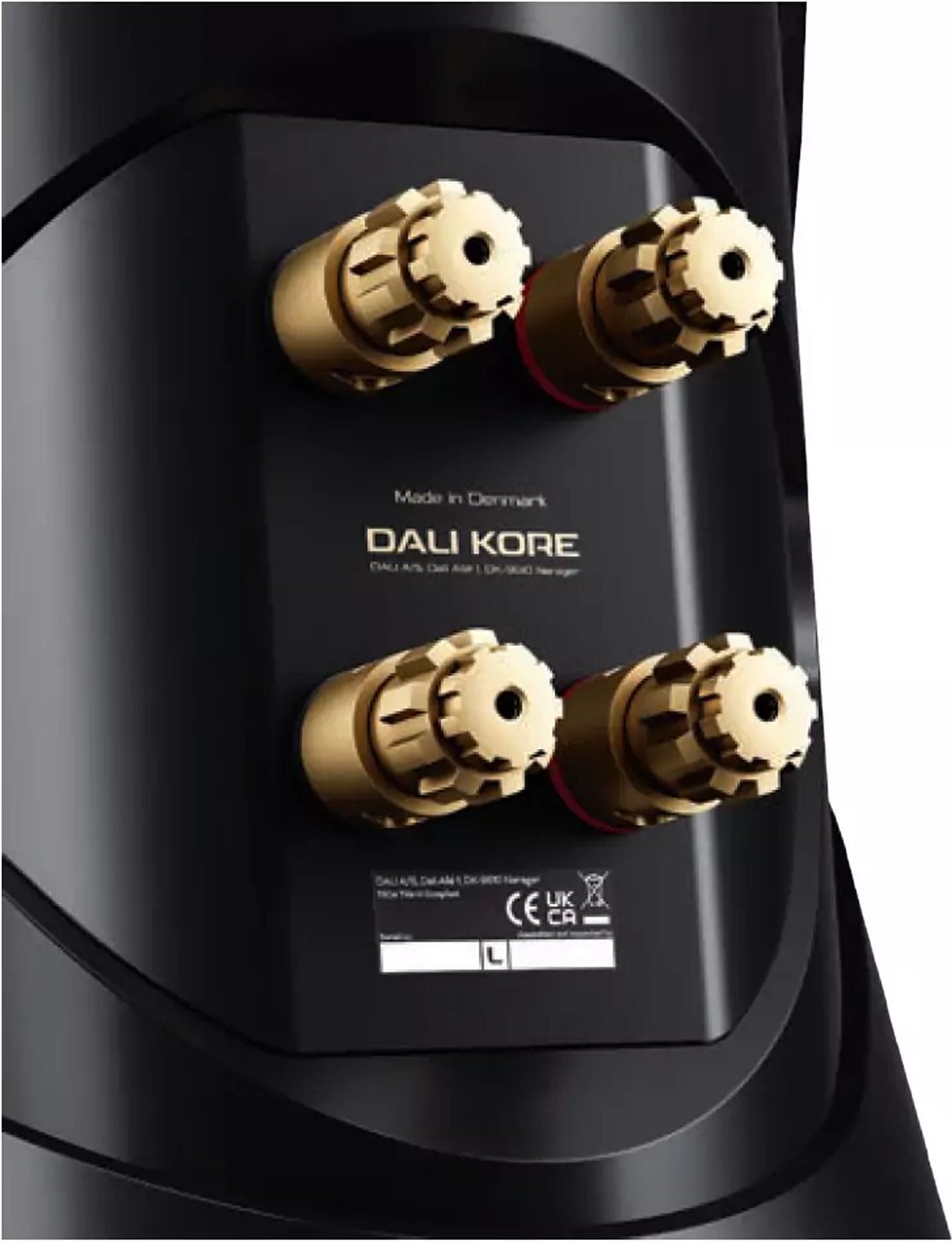
DALI also manufactures the connection panel itself. It is ergonomic and solid, accepts all common connections, and generates high contact pressure.
KEYWORD SMC
Soft Magnetic Compound granulate that is highly magnetic but electrically hardly conductive, which greatly reduces distortions.
But let’s get to the heart of this speaker, which in its complexity and the indispensable perfect interplay of each individual component is reminiscent of a Formula 1 racing car—the chassis. Here, the developers demanded a significant reduction of all kinds of distortions, increased efficiency, higher load capacity for extreme dynamic capabilities, a broad and even radiation angle to enjoy full sound even off-axis, perfect impulse behavior, and much more.
And—the advantage when developing and manufacturing drivers yourself—a design of the drivers that allows a harmonious and perfect division of labor among them with relatively few but extremely high-quality components.
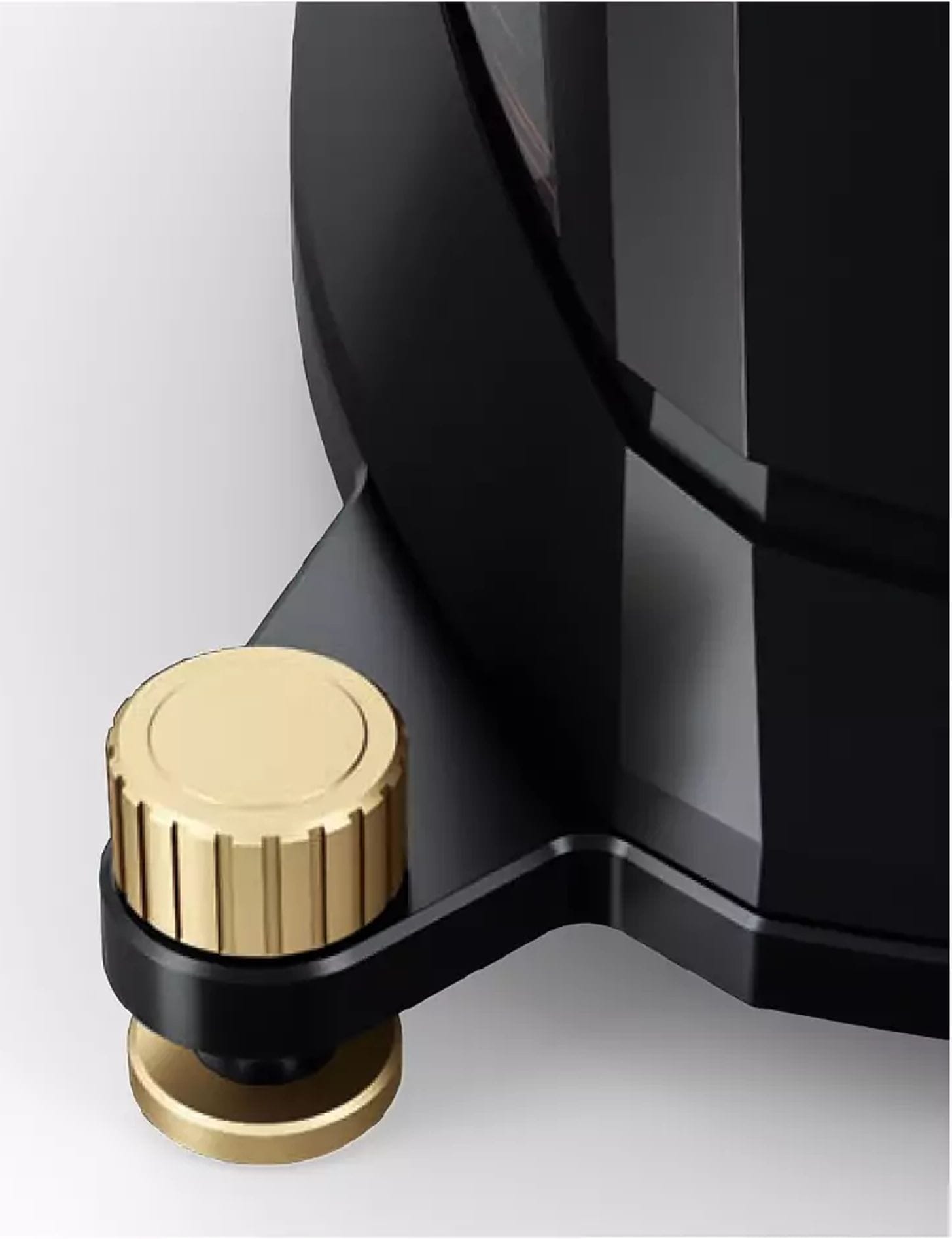
After removing the cap, the spikes can be conveniently adjusted from above. The washer is magnetically attached.
At the Beginning was the Bass
Let’s begin with the two bass drivers, each measuring just under 30 centimeters in diameter, which play in a bass-reflex system to a total volume of respectable 144 liters. They are optimized in their properties and tuning with the other drivers of the Kore for a listening distance of three meters. With the air volume behind the basses and the midrange driver, the shape almost resulted automatically—form follows function at its best, one could say. The great special feature of the drivers is that the particularly large 60.7 mm voice coils are present twice in each driver and have a separate spring damping at both the upper and lower ends. Both the woofers and the midrange driver are constructed with a special magnet system, with different distances to the voice coil, but sharing the same magnet. In the case of the midrange driver, this consists of neodymium; in the woofer, two ferrite magnets are joined together.
The gaps between the voice coils, one on each side of the magnet, have an opposite magnetic field direction, and therefore the respective voice coils must conduct the current in opposite directions to generate the movement force in the same direction.
Similar but Different
This symmetrical design, based on a patent from the 70s, which in practice had not found any known application before due to its complexity, reduces distortions and any compression effects to a considerable extent. The new thing in the case of the Kore is that this technology is combined with SMC, a granulate with tiny, independent magnetic particles that generate an extremely high magnetic flux density of more than 1 Tesla, while the electrical conductivity is about 1/25000 of iron and has been reduced by about two and a half times compared to the 1st generation SMC. These technical tricks ensure that the common pole piece becomes “magnetically transparent,” meaning that the modulation of the magnetic flux into the pole piece (the core) caused by the movement of the voice coil is transmitted in antiphase through the opposite motor systems. Thus, according to DALI, the cancellation of non-linearities by this “Balanced Drive SMC” technology occurs over a much wider frequency range and at different levels.
In conventional drive systems, the heat generated under high load causes the resistance of the voice coil to increase significantly. And of course, new insights have also flowed into the development of membrane material and surround up to the basket.
The midrange driver, which looks like a smaller version of the woofers, works among other things with a titanium voice coil former, and the energy supplied to it is cleanly and quickly converted into sound through a rigid yet lightweight membrane and a weight-optimized surround. The undesired rearward sound radiation is eliminated through a transmission line sound guide without negatively affecting the dynamic response.
In the high-frequency range, the Danes rely on an evolution of the hybrid tweeter unit made of dome and ribbon used since the 90s. But here too, they did not settle for the existing but developed a new 35 mm dome tweeter, which plays in the range from 2.1 kilohertz up to 15,000 Hertz, where the ribbon takes over. Highest detail fidelity and smooth, distortion-free sound were also development goals here, which could also be achieved by lowering the resonance frequency into a harmless range. As an additional plus, a high efficiency and virtually no compression effects are mentioned here as well.
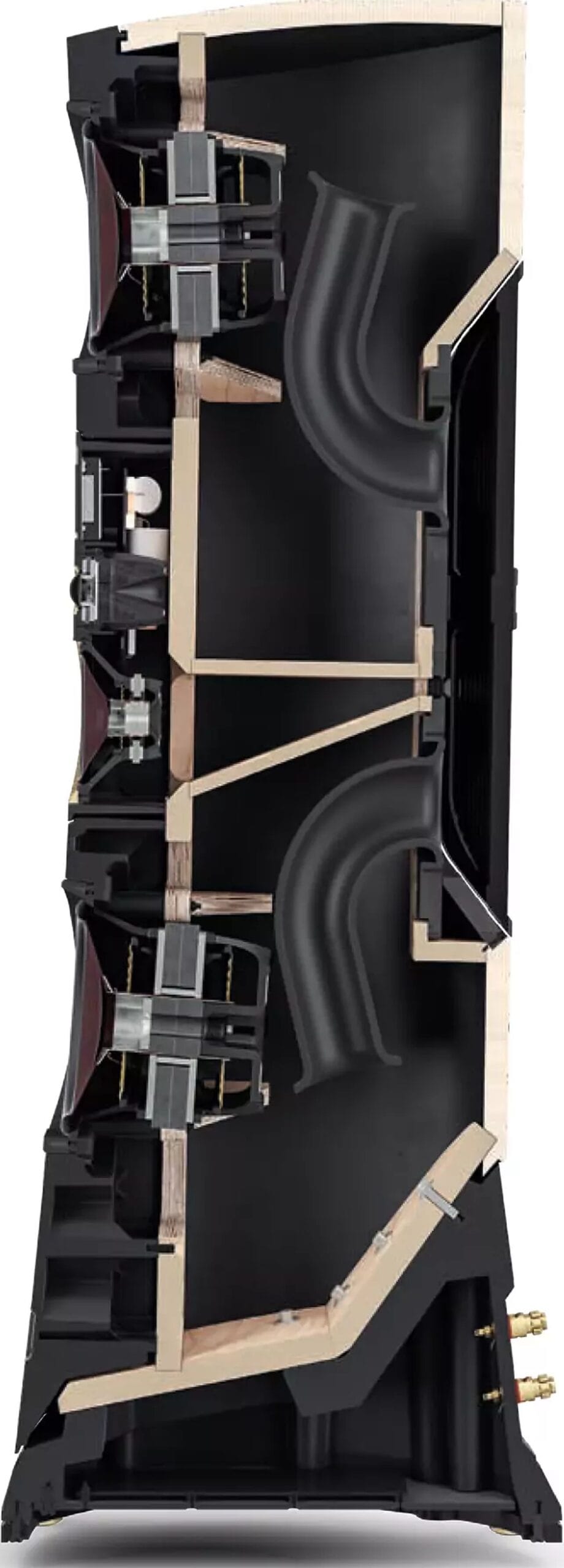
INSIGHT Not only is the outer shape bred for stability, but everything conceivable was also done inside to nip resonances in the bud.
Music, Music, Music
The large floor-standing speaker impressively demonstrated its musical qualities after appropriate break-in time, eager search for the optimal placement, and fine-tuning of electronics and cabling. To achieve a maximum of homogeneity and plasticity, we had to toe-in the Kore towards the listening position.
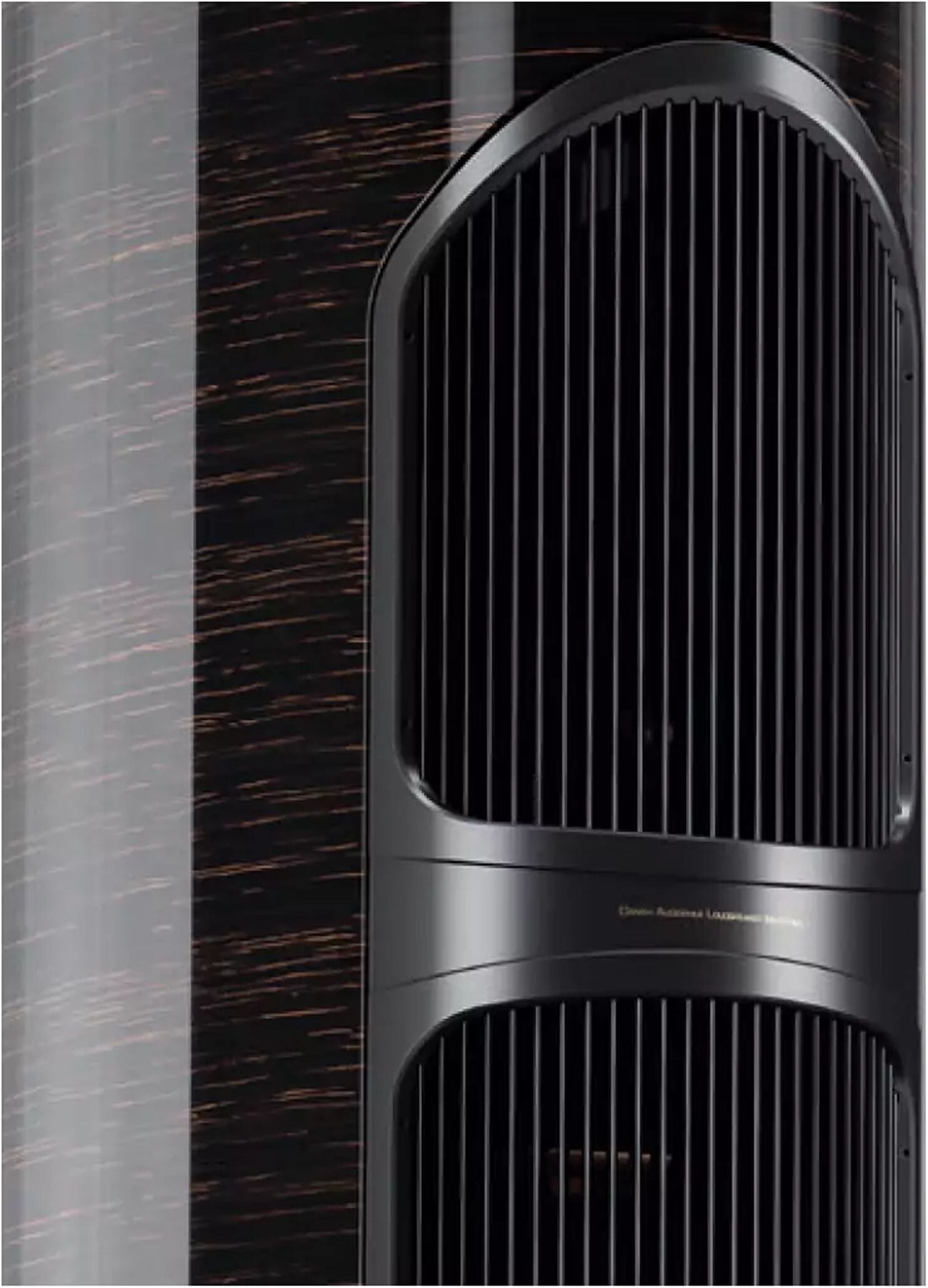
On the back are two large, completely noise-free breathing bass reflex openings.
When Hans Theessink and Terry Evans intoned “Delta Time,” the jaws of the listeners inevitably dropped while a rarely experienced sparkle appeared in the audience’s eyes. The reason for this lay in the mixture, hardly ever experienced in this way, of incredibly plastic, powerful, and dynamic reproduction at low levels as well as adventurous volume and authentic sound colors of voice and guitar, which is only possible so close to the real live experience if during development and production great attention was also paid to seemingly trivialities to be as correct in terms of tonality as in the almost holographic spatial imaging and the absolutely sure feeling for perfect timing.
In doing so, the Kore consistently managed to work out the emotional in the music with playful ease. Carried by a powerful-precise bass foundation, the Danish speaker colossi nevertheless succeeded in disappearing in the listening room—as far as the tones were concerned, which seemed to emerge from nowhere.
Impulse Without Delay
Carolin No with “Still Waters Run Deep” deepened these impressions with her mixture of electronic, impulsive low-frequency components, piano, and delicate voice. That was crisply clean, but by no means sterile or unnaturally over-damped; the tones spread wonderfully lightly in the room, and the acoustic qualities of the speakers belied their space-consuming optics, as was impressively demonstrated with Trentemøller’s “The Forest.”
But of course, your and my record collection fortunately does not consist only of sound jewels, but—I hope at least—of music we love and perhaps have grown fond of over the years. For a Cologne local patriot, this naturally also includes the most Cologne of all Cologne bands: We’re talking about the Bläck Fööss, who recorded an album with classics from their repertoire with many guests in new interpretations for their 50th band anniversary.
“Dat Wasser vun Kölle” comes along as a gospel, with a rap intro by the Beer Bitches, the band around Carolin Kebekus. Over a mediocre system, the rap is hardly understandable, completely different here over the DALI, where you can follow word for word—even if you’re not proficient in the Cologne dialect.
TEST DEVICES
Turntables: Transrotor Rondino / Transrotor Strato
Streamer / CD Player: T+A MP 3100
Preamplifiers: Octave HP 300 SE, Accustic Arts Tube-Preamp II
Phono Preamplifiers: Nagra Classic Phono, Audionet PAM G2
Power Amplifiers: Accustic Arts Amp II MK4, Krell Duo 300 XD, T+A M200, NAD M23 (4x)
Speakers: PMC fact.12 Signature, B&W 801 D4
Cables: AudioQuest, Cardas, HMS, Inak, Stockfisch, Supra
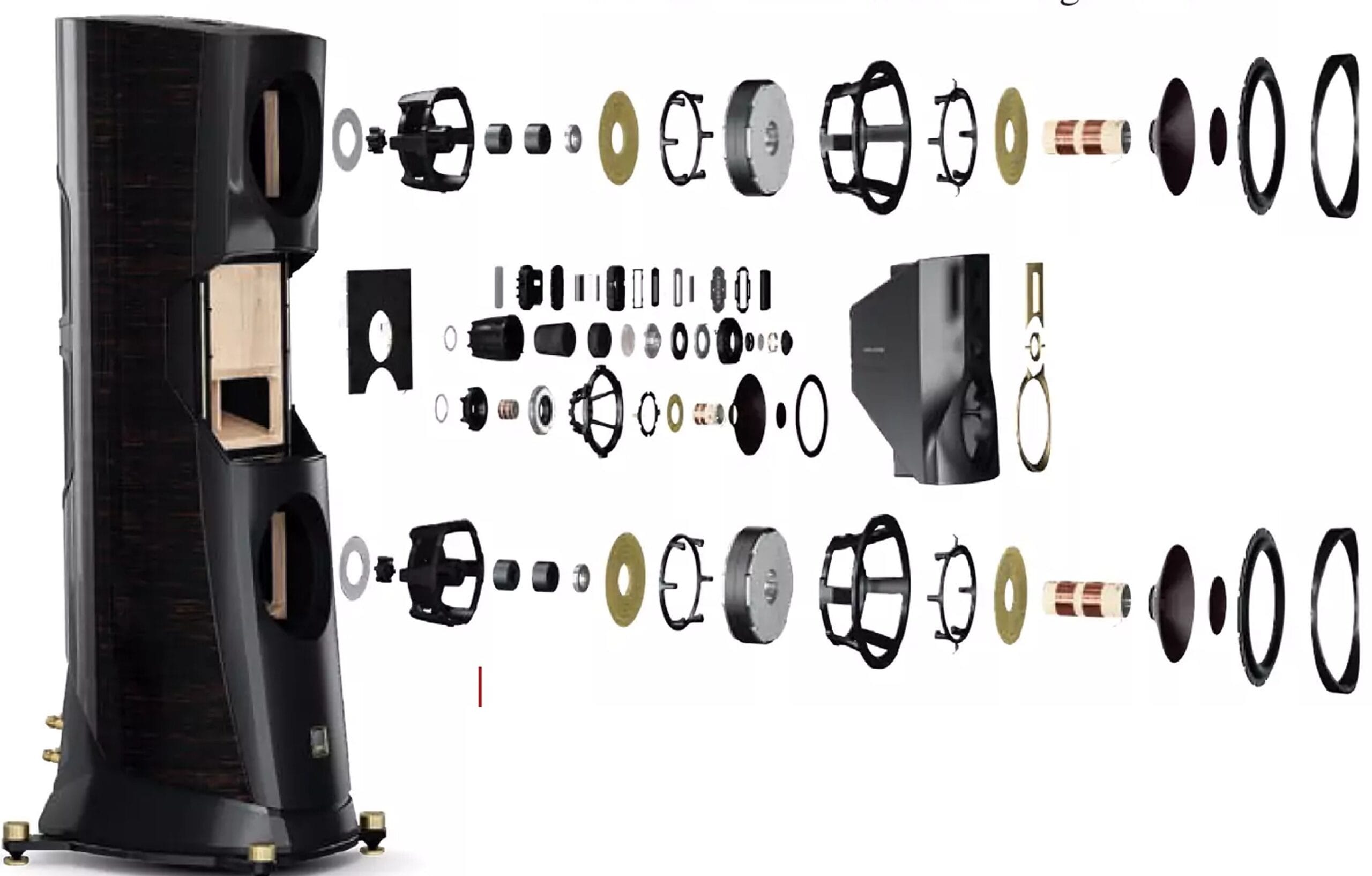
Building a speaker is trivial? Then you should take a look at the exploded view and count the components per driver.
Dynamics Redefined
We then listened to virtuosity from four instruments in excellent sound quality when the Johnny Griffin Quartet with tenor saxophone, piano, double bass, and drums demonstrated as skillfully as easily that jazz by no means only means cerebral music, but rhythm and feeling are an elementary part of this music genre.
You will search long and in vain for more first-class funk than at Maceo Parker’s performance at the Cologne Stadtgarten in March 1992. The energy of these evenings allows the “Life On Planet Groove” album to sound completely effortlessly in the listening room over the DALI even at breathtakingly live-like levels. The heat that made the hall boil on a cold March evening makes you forget the thought of a recording for the duration of the record. And we were always aware that even at levels beyond 100 decibels, we were far from pushing the DALI to its limits. The incredible naturalness and complete transparency down to the deepest bass ranges with which the rhythmically intricate and full of details “Soul Power ’92” of the nine-piece ensemble sounded was simply sensational and previously not perceptible in our listening room.
The Kore competes with the world elite, some of which is many times more expensive.
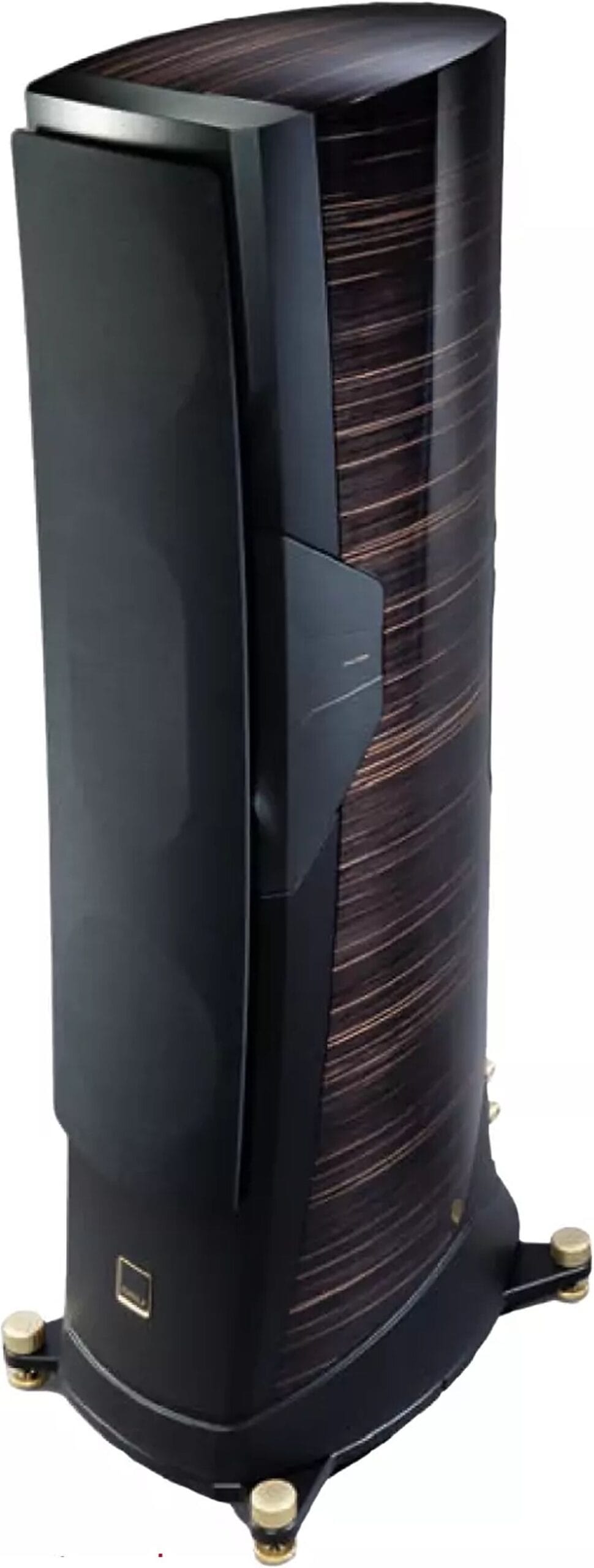
The Kore looks much less technical with the supplied cover.
Enjoyable Voices
Next, we listened to “Carmen” under Lorin Maazel with Julia Migenes and Placido Domingo, a recording from 1984. Of course, with an orchestra, dynamics, authentic reproduction of the entire frequency spectrum, and presentation of details are important criteria, here supplemented by the requirements for believable, physical voice reproduction and high tonal fidelity of instruments and solo as well as choir voices, which should also clearly detach from the orchestra. The depicted stage fit in width, height, and depth, large and to scale—broad grins and incredulous head-shaking were unavoidable. It was like “bathing in music,” as one may have experienced once with a few large line-source speakers with luck. The release of endorphins occurred to a rarely experienced extent; goosebumps, foot tapping, and occasionally moist eyes alternated.
A striking feature of the Kore is its astonishing freedom from coloration. We wondered whether we could expose this till now absolutely flawless performance of the Danish high-flyer speakers at any point of negligence or even faultiness.

DRIVER SHOW The sectional drawings show only a tiny part of the effort.

The predecessor of the Kore was called Megaline, consisted of three modules, and was considered the world’s largest two-way speaker at 2.30 m height.
On the Search for Weaknesses
To make it short: We simply did not succeed, although in the course of the weeks we were allowed to spend with this speaker, we played pretty much every mean record or CD we could get hold of, including Dizzy Gillespie with “Riviera,” “Dafos” with the disassembly of a drum kit into its components, Deep Purple’s “Highway Star,” and Martha Argerich in collaboration with Itzhak Perlman, who showed that they are absolute exceptional talents on piano and violin.
The DALI belongs to the very small circle of super speakers that can hardly be grasped with normal standards or even evaluated in percentages and stars. Its sound is a single grandiose experience, as we have only extremely rarely experienced in similar form, mostly but even less comfortable price regions. Its dimensions and weight will prevent entry into a multitude of living rooms and houses of music enthusiasts, as will its price, which lies far beyond the reach of most people.
There remains the hope that the Danes will soon succeed in transferring a large part of the technology and sound of this groundbreaking product into more manageable sizes and weight classes, and to bring the price into regions one can at least save up for to fulfill a dream. We have let go of this dream of a speaker with a heavy heart.
DALI Kore Specs
Price: around $84,000
Dimensions: 51 x 171 x 67 cm (WxHxD)
Warranty: 5 years
Contact: DALI
- DC Resistance: 4 Ohm
- Minimum Impedance: 3.3 Ohm at 65 Hz
- Maximum Impedance: 15.1 Ohm at 40 Hz
- Sensitivity (2.83V/m): 86.2 dBSPL
- Power Required for 94 dBSPL: 12.9 W
- Lower Cutoff Frequency (-3dBSPL): <32 Hz
- Total Harmonic Distortion (63 Hz / 3 kHz / 10 kHz): 0.12% / 0.07% / 0.11%
A dream speaker as you very rarely find. Big and mighty in appearance, mastering every register between fine detailing and opulence in sound. The brilliant workmanship and the immense depth of development explain the price, which still seems reasonable in comparison.
Measurement Results
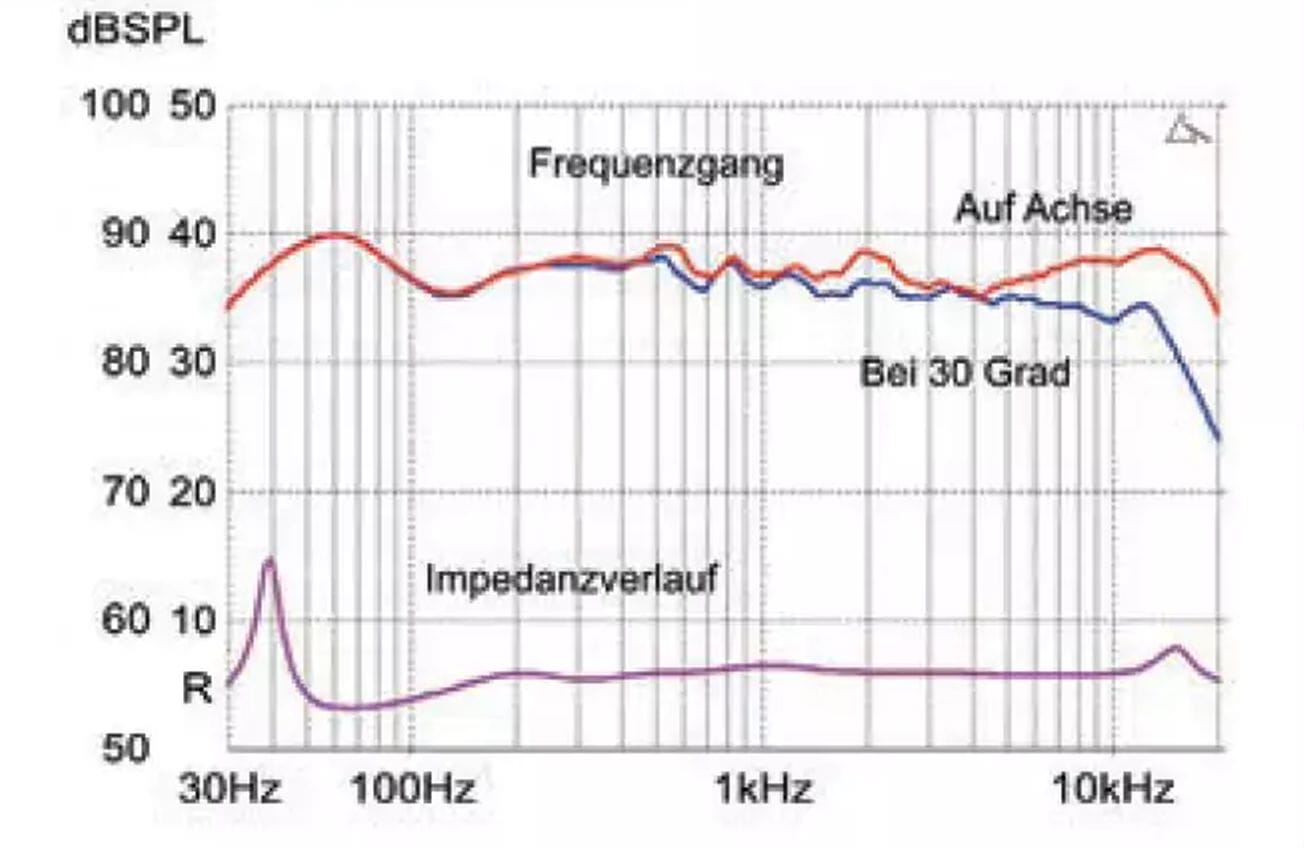
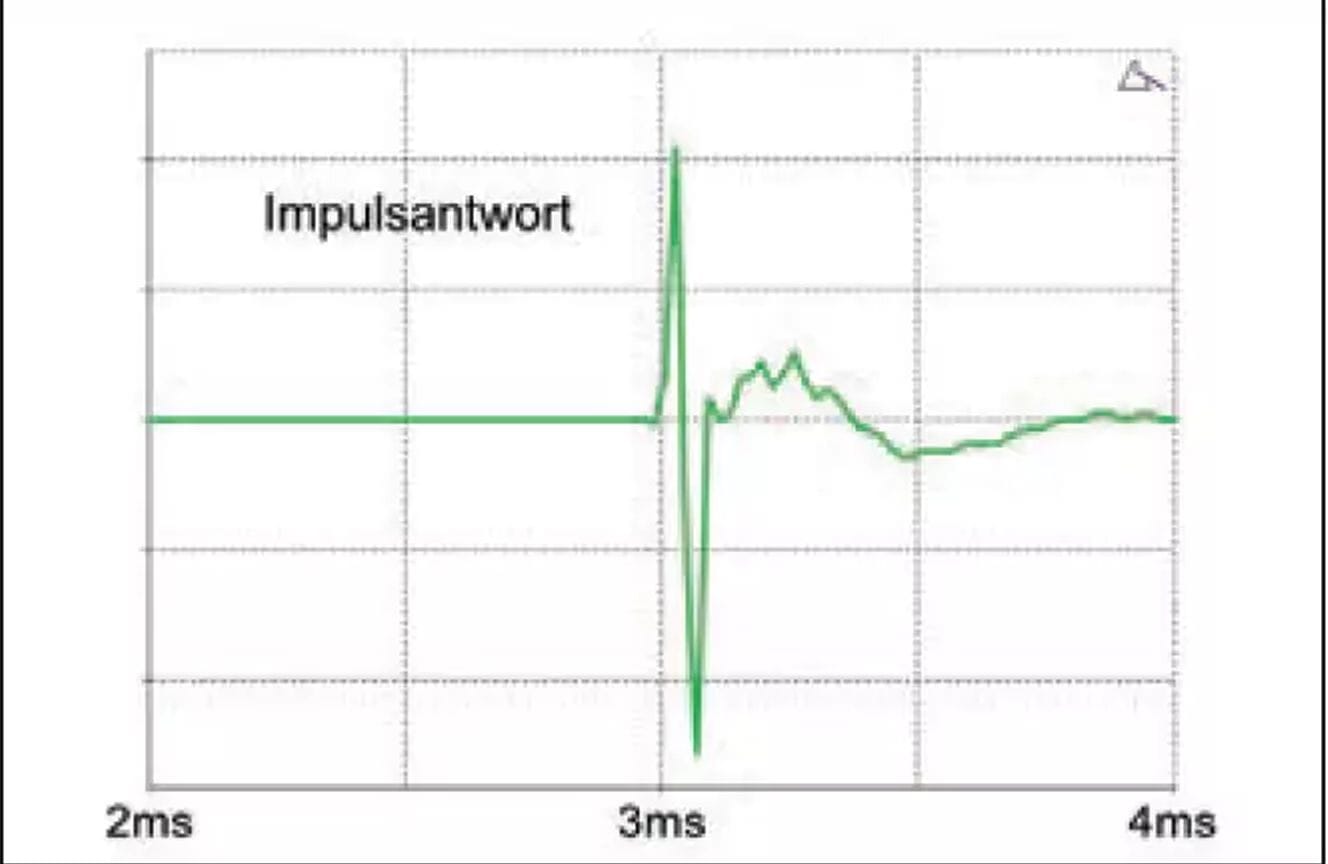
Lab Comment:
Balanced frequency response, very good impulse response, extremely low distortion even in bass frequencies, and medium efficiency.
Features:
- 4.5-Way Bass Reflex Speaker
- Height-Adjustable Spikes
- Magnetically Attached Base Discs
- Removable Grille
- Massive Bi-Wiring Terminal



